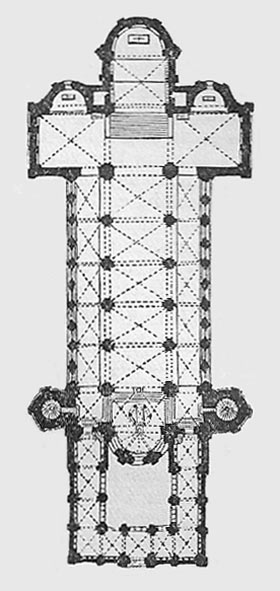Rhenish architecture

The church at Laach
Rhenish architecture is the architectural style of the countries bordering on the Rhine when the arts first revived after the fall of the Roman empire. They and Lombardy being at the time of Charlemagne part of the same empire, Lombard architecture has considerable affinity with those north of the Alps.
Some early examples of this style are still to be found in Switzerland. Architecture received great encouragement from Charlemagne and his successors, and the Rhenish style made great progress up to the beginning of the 13th century, when the fashion of copying the Gothic architecture of France superseded it. It is, however, a well-marked style, and is complete and perfect in itself. Like the Lombard style, it is round-arched, and has some remarkable peculiarities. Many of the earliest churches seem to have been circular (like the cathedral at Aix-la-Chapelle, built by Charlemagne), but in course of time the circular church was absorbed into the basilica, or rectangular church, in the form of a western apse. Most German churches thus have two apses – an eastern and a western. They also have a number of small circular or octagonal towers, which seem to be similar in origin to the round towers of Ireland. They exemplify in a remarkable manner the arrangements of an ancient plan of the 9th century, found in the monastery of St Gall, and supposed to have been sent to the abbot, as a design for a perfect monastery, to aid him in carrying out his new buildings. The arcaded galleries at the eaves, and the richly-carved capitals, are among the most beautiful features of the style.
Examples are numerous from about 1000 to 1200 AD. The three great specimens of the style are the cathedrals of Mainz, Worms, and Spires. The last is a magnificent building, 435 feet long by 125 feet wide, with a nave 45 feet wide and 105 feet high. It is grand and simple, and one of the most impressive buildings in existence. There are also numerous fine examples of the style at Cologne – the Apostles' Church, St Maria im Capitol, and St Martin's being amongst the most finished examples of Rhenish architecture.
 |
| Plan of the church at Laach |
The illustrations here of the famous church of the Benedictine abbey at Laach, near Coblenz, explain the peculiarities of plan and elevation referred to above. The vaults in this case being small, the different spans were managed (although with round arches) by stilting the springing; but in great buildings like Spires and Worms the vaults are necessarily square in plan, in this round-arched style, and the nave embraces in each of its bays two arches of the side aisles – a method also followed by the early Gothic architects. From the use of the round arch and solid walls, the exteriors are free from the great mass of buttresses used in Gothic buildings, and the real forms are distinctly seen.
